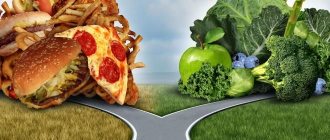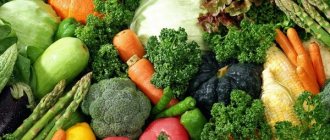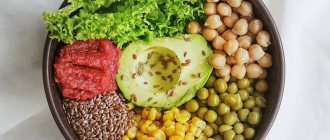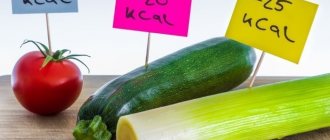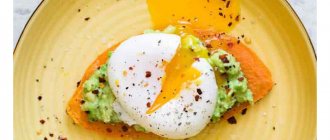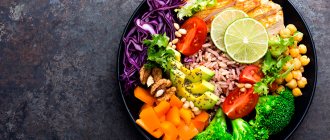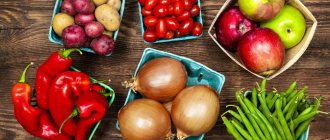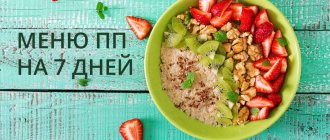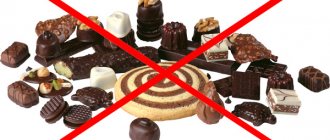It’s enough to type “weight loss diet” into a search engine, and the all-knowing Google will come up with dozens of names. Here you will find a low-carb, low-calorie, protein, keto diet and several dozen more “name” programs that promise weight loss. If you analyze the fashion for diets (and this, no doubt, also exists!), then at different times the pendulum shifts either towards low-calorie or towards protein nutrition systems. Now, some observant nutritionists say, the era of “hunger” diets continues, and many young ladies who want to get rid of fat on their sides perceive protein foods as something excessively high in calories and unworthy of their diet. But what is the reality: is it possible to lose weight on a high-protein diet?
What is a high protein diet
Content:
- What is a high protein diet
- How proteins affect weight loss
- What else is protein good for during a diet?
- Protein: how much and when to eat to lose weight
- How to select products
- The best protein diets
- High protein diet program for a week
- Risks of a High Protein Diet
There is no hard line between a regular protein diet and a high protein diet (HPD). But, as a rule, if more than 35% of daily calories come from protein foods, they speak of a high-protein diet. The normal daily diet of an adult should consist of 30-35% proteins. But why, exactly, are proteins needed and what is their role in the process of burning fat deposits?
Proteins perform many different functions in our body. Protein food is necessary, if only because the quality of muscles, skin, hair, nails, bones, and teeth depends on it. If there is a protein deficiency, these tissues will not be able to grow and regenerate. Without enough protein, the body will not be able to produce the hormones and enzymes necessary for its functioning. In addition, proteins can be called a kind of “delivery service” within the body: these substances help transport oxygen molecules to all cells. And these are just a few points from the huge “track record” of proteins.
It is also undesirable to forget that proteins consist of smaller particles - amino acids. The human body needs 22 of them. Nine amino acids are essential; our bodies cannot produce them on their own, but must be obtained from food. Depending on the amino acid profile, food protein is distinguished by quality. All proteins obtained from animal products are called complete, that is, they contain all the amino acids we need. This category includes eggs, dairy products, fish, meat, and poultry. Plant proteins also provide humans with a large amount of amino acids, but not all of the essential ones, so they are “incomplete.” The best sources of vegetable protein are considered to be beans, soybeans, cereals, seeds, and nuts. And when it comes to a high-protein diet, it is very important to consider the quality of those same proteins.
How proteins affect weight loss
Many studies indicate that increased protein intake can affect appetite, metabolic rate, body weight and body composition (change the ratio of fat tissue to muscle tissue).
A protein-rich diet effectively suppresses hunger and keeps you feeling full for several hours after eating. And what’s most surprising is that the reason is not high calorie content. Protein, on the one hand, activates the production of hormones in the body that create a feeling of fullness, and on the other, suppresses the production of the so-called hunger hormone. For this reason, protein foods are considered one of the best for suppressing “brutal appetite.”
During a scientific experiment in which 20 healthy young people took part, subjects from the first group were allowed to eat as much food as they wanted per day, but all foods contained 30% protein. Representatives of the second group were offered the same thing, but the food contained only 10% proteins. As a result, it turned out that young people from the first group ate an average of 440 kilocalories less per day than young men from the second.
Another ability of protein is to speed up metabolism and thereby increase the number of calories burned. Some researchers, citing their own observations, claim that protein foods can speed up metabolism by 20-35%. That is, people following a high-protein eating program fill up faster, stay full longer, and ultimately burn more calories.
But this is not all the amazing facts about the effect of protein on body weight. It turned out that protein food not only promotes weight loss, but also specifically fights fat deposits. Speaking about this, the researchers refer to a 6-month experiment in which 65 overweight women took part. As a result, it turned out that the experiment participants who consumed more protein lost more fat, but at the same time maintained muscle mass. This “phenomenon” is known in science as a state of ketosis, when the body adjusts to a special regime and uses fat deposits on the body as an energy source. But to trigger ketosis, it is important not only to eat a lot of proteins, but also to exclude carbohydrates from the diet.
Exit from a fast protein diet
Maintaining the achieved result largely depends on the correct way out of the diet, so you should not immediately lean on fast food, sausage and cakes. It is advisable to abandon them altogether.
Read the popular article in the category: Low-calorie foods for weight loss. List and Table.
In the first two weeks, you need to increase the number of calories eaten per day by adding cereals and fruits . Then you can add sour cream and butter to your diet.
You cannot stick to the same diet for more than 14 days. Repeating the diet is possible no earlier than six months later.
Replace dairy and fermented milk products with medium-fat products. You can add bread, juices and some sweets.
What else is protein good for during a diet?
Losing weight is, as they say, only half the battle. In the fight against extra pounds, it is important not to lose health and maintain beauty. In this case, there is no equal to a nutrition system based on the consumption of large amounts of proteins.
Proteins, as already mentioned, preserve muscle mass. And if you do strength training during a protein diet, you can give relief to your abs, arms and legs. If you have to remove a lot of extra pounds, then there is a risk of sagging skin on your arms, legs, and stomach. Protein foods and moderate physical activity will again help prevent this. Some unbalanced diets can make bone tissue brittle and weak. Following a high-protein diet that contains a lot of dairy products eliminates this risk and, conversely, improves the structure of bones and teeth.
Sample menu
The daily protein diet menu after IVF may look like this:
- For breakfast – 2 hard-boiled eggs, a glass of kefir, a handful of dried apricots.
- For lunch - chicken broth with durum noodles, stewed rabbit with vegetables, buckwheat and salad (tomatoes, cucumbers).
- For dinner - a portion of salmon, topped with creamy sauce, and a stewed vegetable mixture.
- For snacks (usually 2-3 during the day) - unsweetened cottage cheese with 5% fat content, dried fruits, banana or apple.
Doctors of various specialties work in the reproductive department, incl. nutritionist. A specialist will help you create a rational menu for a protein diet during IVF. A healthy diet in combination with other activities and treatment will create the necessary conditions for successful implantation and subsequent development of the fetus.
Protein: how much and when to eat to lose weight
Researchers have differing opinions about the daily amount of protein required for effective weight loss. But if we start from the idea that the caloric content of a high-protein diet should consist of more than 35% protein foods, then the following indicators are obtained. With a total calorie diet of 800 kcal/day, you need to eat at least 70 g of protein food. At 1000 kcal/day - 87.5 g, at 1200 kcal - 105 g, at 1500 kcal - 131 g. But these are still, so to speak, “raw” numbers, since the body weight of a person following a high-protein diet is also of great importance. According to the standards calculated for bodybuilders, the daily protein intake should be approximately 2-3 g of nutrient per 1 kg of body weight. In some cases, the protein portion is increased to 3-4 g/1 kg, but in this case the risk of side effects increases significantly, which we will talk about a little later.
One more important note. Following a high-protein diet does not mean that you have to eat a kilogram of fish or meat in one sitting. The human body works in such a way that in one meal it is able to absorb no more than 10-20 g of pure proteins. The rest can be considered thrown away.
Also, for effective fat burning and muscle building, the quality of proteins matters. Most proponents of a high-protein diet advocate animal proteins, since they are almost completely absorbed by our bodies. But at the same time, there is no reason to eat exclusively chicken, meat and fish throughout the diet. Dairy products, eggs, beans, grains, soy, some vegetables, nuts and seeds should also be included in the diet as an alternative source of proteins.
How to select products
A high-protein diet is one of those nutritional systems that helps to “tame” your appetite and satisfy hunger for a long time. But you should start losing weight using this program gradually, slowly increasing your protein intake every day.
When choosing foods for your diet, it is important that they contain a minimum of saturated fat. For this reason, it is better to give preference to dietary meats and low-fat dairy products. An almost ideal source of protein for the diet is sea fish and seafood. In addition to complete protein, they contain omega-3 fatty acids, which are incredibly beneficial substances for the body.
| Product (100 g) | Protein content |
| Low-fat cottage cheese | 10-14 g |
| Tofu | 8 g |
| Lentils (cooked) | 9 g |
| Chicken breast | 25 g |
| Fish fillet | 17-20 g |
| Eggs | 13 g |
| Cheese | 21 g |
| Beans | 7 g |
| Nuts | 12-21 g |
| Beef | 26 g |
| Pork | 27 g |
| Natural yogurt | 6 g |
| Low-fat milk | 4 g |
But if, so to speak, traditional sources of protein are already pretty fed up during a long high-protein diet, you can supplement the menu with alternative products. Take spinach for example. 100 g of this leafy vegetable contains 2.5 g of protein. It is enough to add a handful of this product to soup, omelette or make a salad from it to increase the amount of protein in your daily diet by several grams. Approximately the same amount of nutrients (2.6 g) is contained in 100 g of the exotic guava fruit, and one medium artichoke contains more than 4 g of protein. An even better source of protein is peas. In 100 g of fresh green peas there is 5 g of protein, in two slices of whole grain bread, experts counted approximately 10 g of protein, and in 100 g of almonds - all 20 g of useful nutrients.
Reviews and results
This diet is not easy to follow because it has many restrictions and takes into account many nutritional factors. But such nutrition is a vital necessity for patients. Strict control of potassium and phosphorus adds further restrictions. However, patients have adapted to such a dietary diet, supplement it with protein-free foods and amino acid , and consider unsalted and tasteless dishes to be the only drawback.
- “... High blood pressure and creatinine forced me to make adjustments to my diet. Only diet helps. At this stage, I sharply limited the salt, removed cottage cheese and cheese, I don’t eat fish - I don’t like it. I limited my meat a little (at the expense of pork and beef, I’m generally indifferent to meat). Main food: potatoes, rice, cabbage, zucchini, rolled oats, butter and vegetable oil, I drink milk, but not every day. I really love vegetables in any form (cutlets, casseroles, stews, purees) and they help me out. The course of chronic renal failure will make adjustments and it will be clear what to do next”;
- “... I’ve already adapted to this diet. For breakfast - rolled oats with water, add honey, a little apple, I can make an omelet or milk rice porridge or sago. I buy homemade unleavened cheese (like Adyghe cheese) and tea. For lunch I cook boiled meat or bake it. As a side dish I use rice, buckwheat, stewed cabbage or zucchini. I add pepper, onion, garlic, and basil to all dishes. For now, I don’t limit vegetables and fruits, except for the leaders in potassium (bananas, dried apricots, dates, raisins). I go on business trips and even there I solve the nutrition problem: I take food in containers (rice and boiled chicken/turkey). Of course, I want meat, but I can’t have too much, so I add just a spoonful of minced meat to the porridge. I can only eat 50 g of meat per day. I don’t count anything other than protein. It's good that low-protein foods exist and this allows you to eat better and follow a diet. I buy protein-free flour and bake my own bread, cereals, pasta, and cookies. Pasta tastes no different from regular pasta. I use scales that calculate the content of foods based on protein, salt, fats, carbohydrates, and show calories. Potassium, if necessary, can be taken from the tables. Thus, for health reasons I have been at the same level for 4 years already”;
- “... Nutrition for chronic renal failure is very important. Previously, I only limited protein, but now the potassium level has increased, and the doctor said to be sure to take this into account. Therefore, I excluded tomatoes, peppers, chocolate, bananas, dried fruits, citrus fruits - I can only add a slice of lemon, a slice of orange or tangerine to tea. I eat eggplants, but I soak them in salt water for 30 minutes, they release juice and lose microelements. Then I fill it with fresh water, soak it and squeeze it out. I do the same with cabbage. I eat unsalted, several times boiled rice with zucchini or nori. For taste, I sprinkle with turmeric, green onions and sunflower oil. I also eat buckwheat and corn porridge - there is more protein than in rice, but there is less phosphorus. I mix calcium carbonate with food and drink Ketosteril 12 tablets a day. He doesn’t make me want to eat.”
The best protein diets
In the ranking of all types of diets for weight loss, protein systems for weight loss are considered one of the most effective and useful. But not all protein diets are equally popular and effective.
One of the most popular is the Atkins nutrition system. According to the author of this nutrition program, the diet contains 29-30% protein. Many take the Atkins program as a basis, but increase the daily amount of protein so that a total of 35% of the nutrient is obtained. Another popular protein system is the South Beach diet, invented by American cardiologist Arthur Agatston. It, like the Atkins diet, is based on consuming 30% protein food per day. But if desired, the amount of protein can also be easily adjusted, in particular by reducing fat.
Who needs a protein-free diet?
As a rule, this type of diet is used in cases of serious kidney damage. In this case, patients are on strict bed rest and drink a small amount of water.
The second reason is the presence of problems with the removal of proteins from the body. Then a similar treatment is prescribed to help the body. It is not recommended for healthy people to get carried away with such nutrition - protein is essential for us! Weight loss down to minus 6 kg in 7 days is achieved through a low-calorie menu. However, the result obtained is temporary and harmful to you.
High protein diet program for a week
This meal plan calls for approximately 100 grams of protein daily. However, if you wish, you can increase the portions of proteins to the daily requirements you need.
Day 1
Breakfast: 3 eggs, 1 whole grain toast, 1 tablespoon olive oil, pear.
Lunch: avocado and cottage cheese salad, orange.
Dinner: 150-200 g beef steak, zucchini.
Day 2
Breakfast: cocktail of 1 glass of milk and strawberries.
Lunch: 150 g salmon, apple and leafy green salad with olive oil and lemon juice.
Dinner: 100-150 g chicken meat, Brussels sprouts.
Day 3
Breakfast: oatmeal with natural yogurt and a handful of chopped nuts.
Lunch: 120 g chicken, avocado and red pepper salad, peach.
Dinner: 150 g veal, brown rice.
Day 4
Breakfast: omelet of 3 eggs and 100 g of cheese with olives, orange.
Lunch: 150 g of veal, stewed vegetables.
Dinner: 120 g halibut, lentils, steamed broccoli.
Day 5
Breakfast: 100 g of cottage cheese with a handful of nuts, apples and cinnamon.
Lunch: 150 g salmon, carrots stewed in olive oil, 2 slices of whole grain bread.
Dinner: steamed chicken cutlets, spaghetti.
Day 6
Breakfast: 2 boiled eggs, 30 g of cheese, tomatoes, whole grain toast.
Lunch: chicken fillet, black rice, salad of your favorite vegetables.
Dinner: 85 g shrimp/120 g sea fish, beans stewed with bell peppers and onions.
Day 7
Breakfast: cottage cheese with nuts.
Lunch: beef steak with stewed vegetables, a slice of whole grain bread.
Dinner: 200 g of salmon or other grilled sea fish, stewed spinach.
While following this nutritional system for weight loss, we must not forget about the importance of physical activity and daily consumption of at least 2 liters of clean water.
Protein-free diet for diabetics
This diet is aimed at normalizing blood sugar levels. It is recommended to use it no more than once a month. We exclude eggs, spices and sugar. The menu is as follows:
- cabbage salad or zucchini caviar with green tea;
- fresh cucumbers or tomatoes;
- cook pasta without spices, eat it with salad and unsweetened compote;
- light fruit salad;
- some white rice and grated beets.
